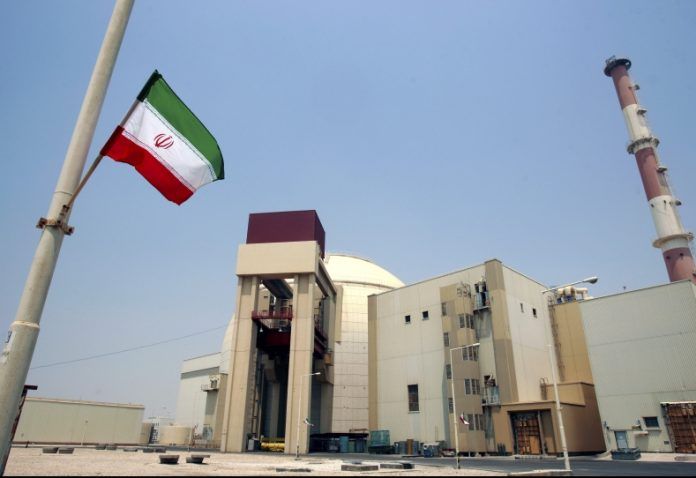By Michelle Nichols
June 27 (Reuters) – Iran could within days breach part of its 2015 nuclear deal with world powers, a move that could eventually culminate in the return of all international sanctions on the country.
Diplomats said on Thursday Iran could soon exceed a cap on low-enriched uranium. The limit was agreed as part of the nuclear deal that lifted most international sanctions on Iran in return for curbs on its atomic activities.
If any one of the European parties to the deal – Britain, France and Germany – believe Iran has violated the agreement, they can trigger a dispute resolution process that could, within as little as 65 days, end at the U.N. Security Council with a so-called snapback of U.N. sanctions on Iran.
Russia and China are allies of Iran and unlikely to make such a move.
“The more Iranians do things that potentially violate the accord, the less inclined we are to make efforts to help them, It’s a vicious circle. If they go in this direction they will be all alone, face snapback and be ostracized by everyone,” said a senior European diplomat, speaking on condition of anonymity.
Most of the U.N. sanctions on Iran were removed in January 2016, when the deal – formally called the Joint Comprehensive Plan of Action (JCPOA) – was implemented. The accord was originally agreed by Iran, Britain, China, France, Germany, Russia and the United States.
U.S. President Donald Trump unilaterally withdrew from the deal last year, arguing it did not do enough to restrict Iran’s nuclear program and failed to address Iran’s missile program and its support for proxy forces in the Middle East.
After his decision, which inflamed U.S.-Iranian tensions, Washington restored U.S. sanctions designed to slash Iran’s oil exports, as well as imposed new economic penalties in an effort to force Iran into negotiations about a broader agreement.
Under the deal’s dispute process, Iran could argue the U.S. withdrawal and Washington’s sanctions campaign “constitutes significant non-performance” and “treat the unresolved issue as grounds to cease performing its commitments.”
Iran could also argue a reduction in its commitment is not a violation because, under a separate provision, the agreement said: “Iran has stated that it will treat such a re-introduction or re-imposition of the sanctions … or such an imposition of new nuclear-related sanctions, as grounds to cease performing its commitments under this JCPOA in whole or in part.”
Here is how the dispute resolution process, which could take up to 65 days to play out unless extended by consensus, works:
JOINT COMMISSION DISPUTE RESOLUTION PROCESS
STEP ONE – If any party to the nuclear deal believes another party is not upholding their commitments they can refer the issue to a Joint Commission, whose members are Iran, Russia, China, Germany, France, Britain and the European Union. (The United States was a member before it withdrew from the deal.)
The Joint Commission would then have 15 days to resolve the issue, unless it agrees by consensus to extend the time period.
STEP TWO – If any party believes the matter has not been resolved after that first step, they can refer it to the foreign ministers of the parties to the deal. The ministers would have 15 days to resolve the issue, unless they agree by consensus to extend the time period.
In parallel with – or in lieu of – consideration by foreign ministers, the complaining party or the party accused of non-compliance could also ask for the issue be looked at by a three-member advisory board. The participants to the dispute would each appoint a member and the third member would be independent.
The advisory board must provide a non-binding opinion within 15 days.
STEP THREE – If the issue is not resolved during the initial 30-day process, the Joint Commission has five days to consider any advisory board opinion in a bid to settle the dispute.
STEP FOUR – If the complaining party is not satisfied after this and considers the matter to “constitute significant non-performance,” they could “treat the unresolved issue as grounds to cease performing its commitments under this JCPOA in whole or in part.”
They could also notify the 15-member U.N. Security Council that the issue constitutes “significant non-performance.” In the notification the party must describe the good-faith efforts made to exhaust the Joint Commission dispute resolution process.
UNITED NATIONS SECURITY COUNCIL
STEP FIVE – Once the complaining party notifies the Security Council, the body must vote within 30 days on a resolution to continue Iran’s sanctions relief. A resolution needs nine votes in favor and no vetoes by the United States, Russia, China, Britain or France to pass.
STEP SIX – If such a resolution has not been adopted within 30 days, the sanctions in all previous U.N. resolutions would be re-imposed – referred to as snapback – unless the council decided otherwise. If the previous sanctions are re-imposed they would not apply retroactively to contracts Iran signed.
(Additional reporting by John Irish in Paris Editing by Marguerita Choy)


